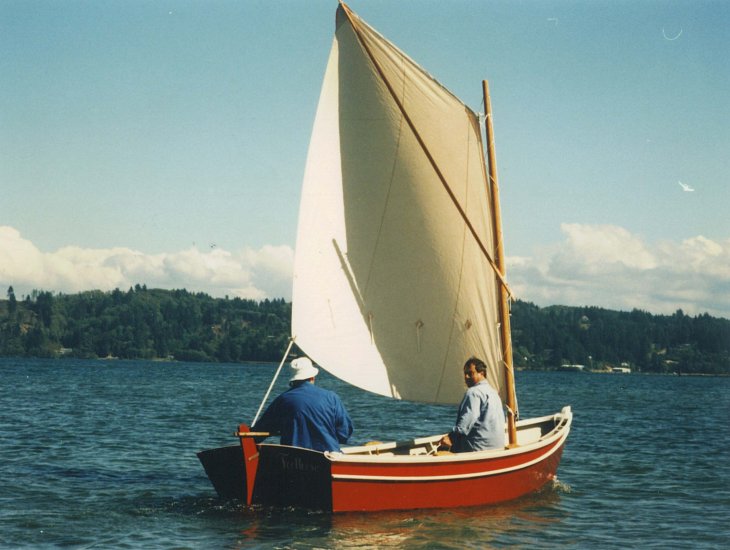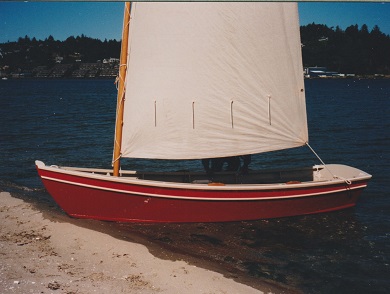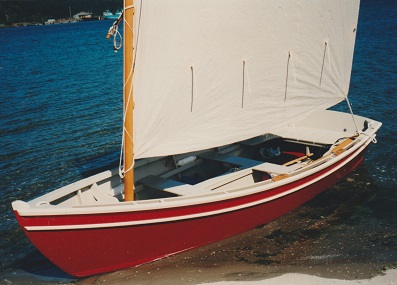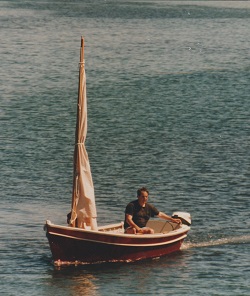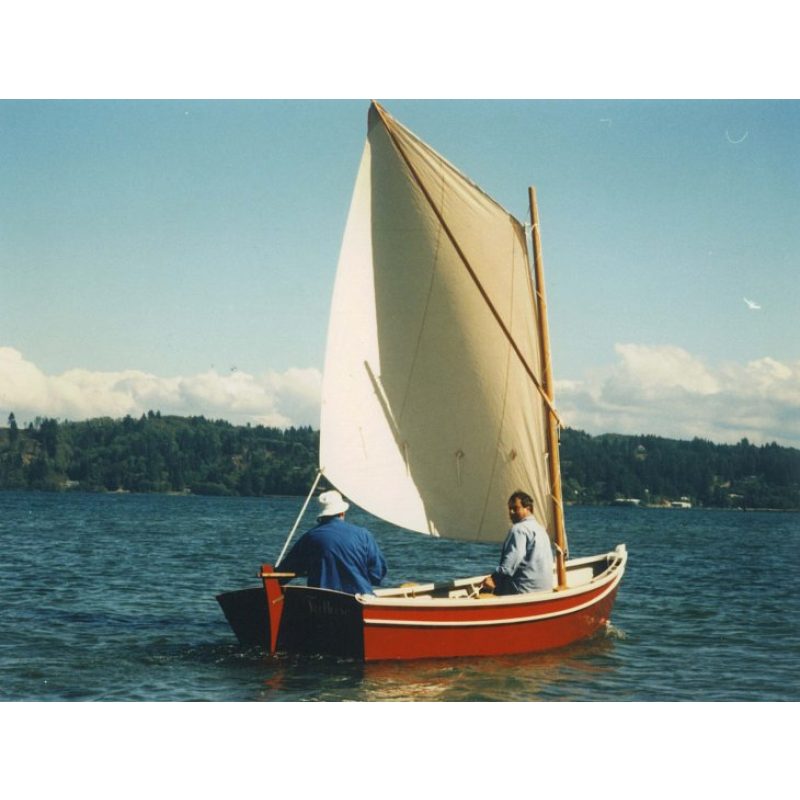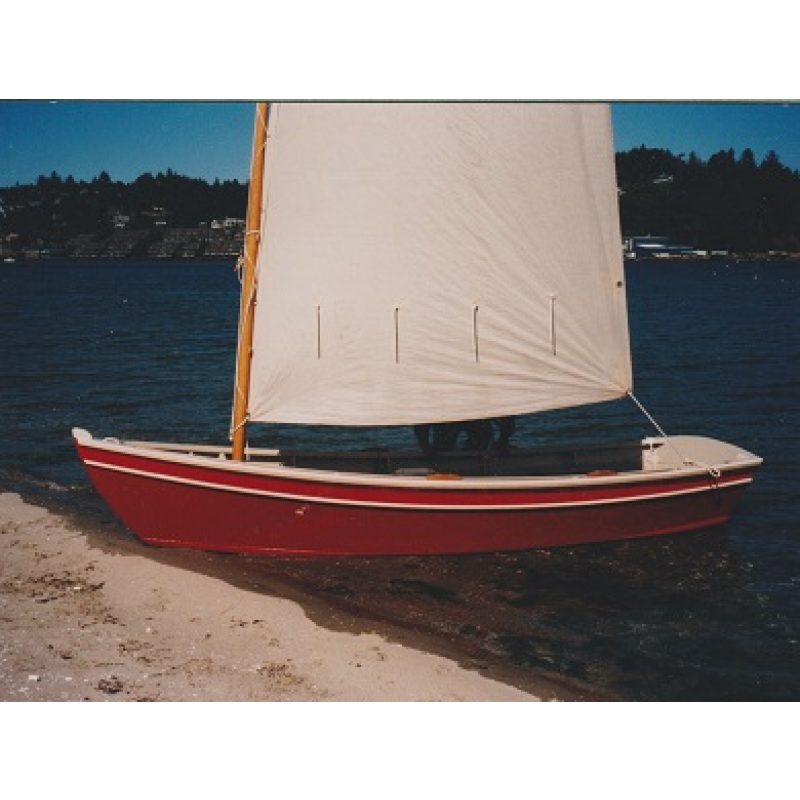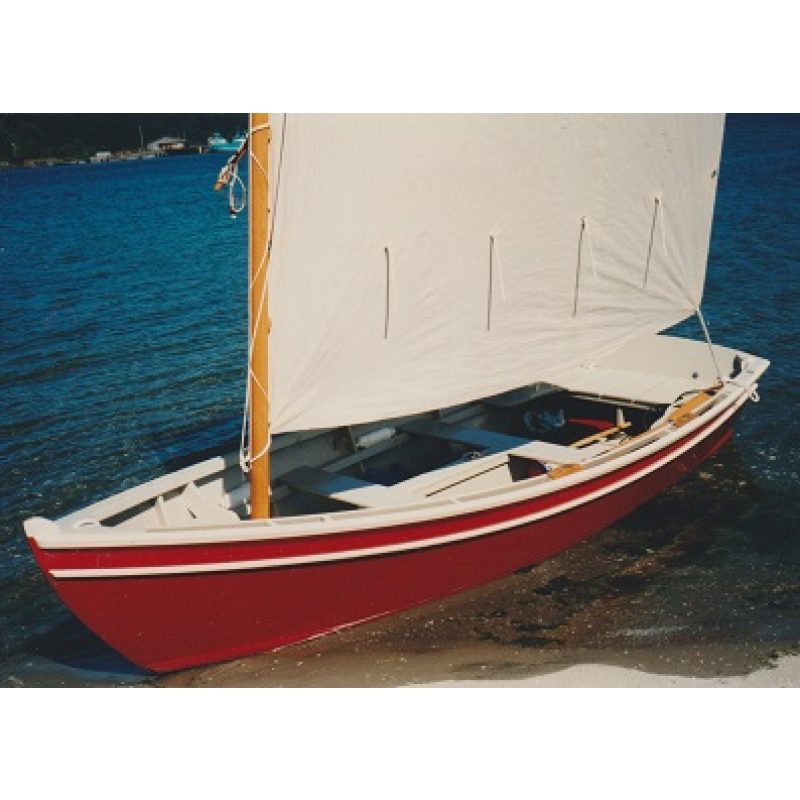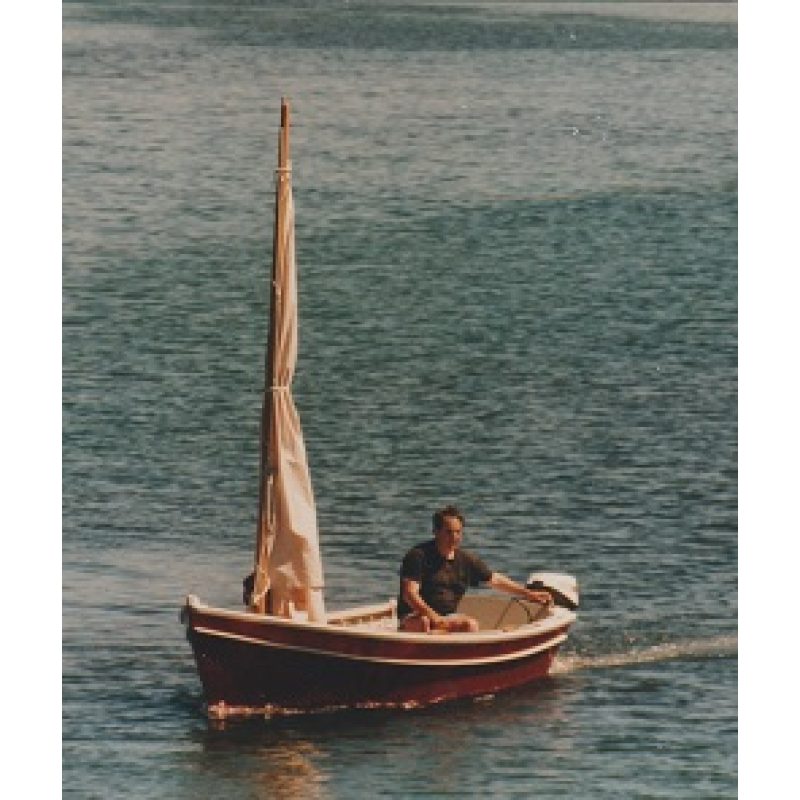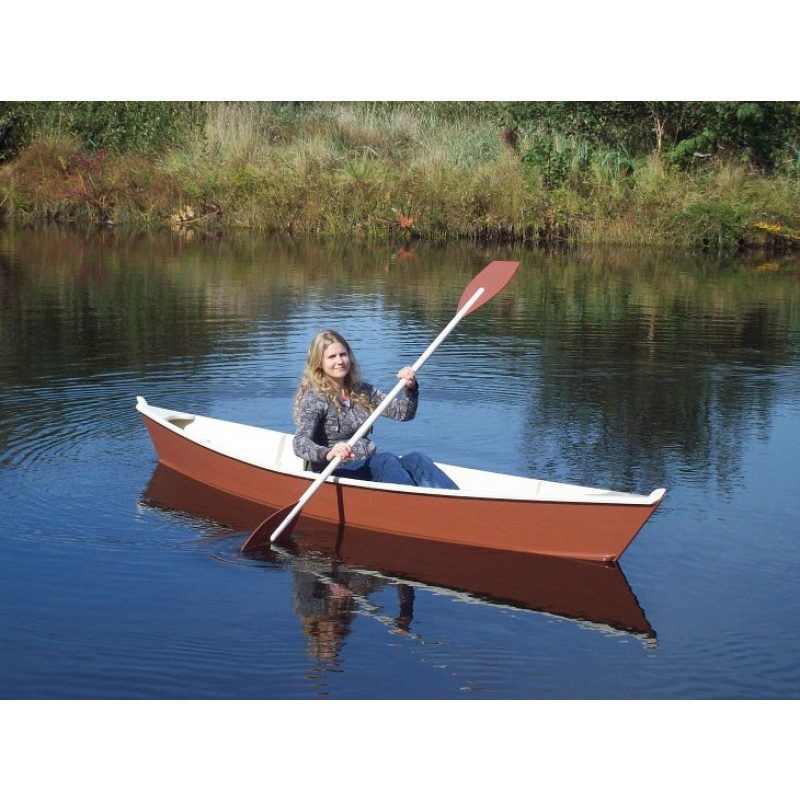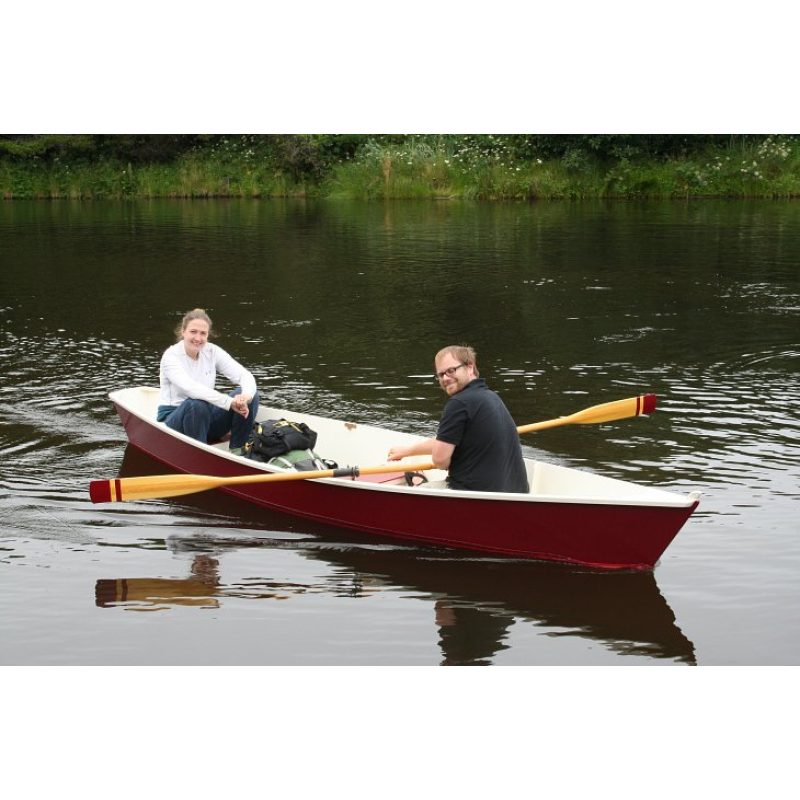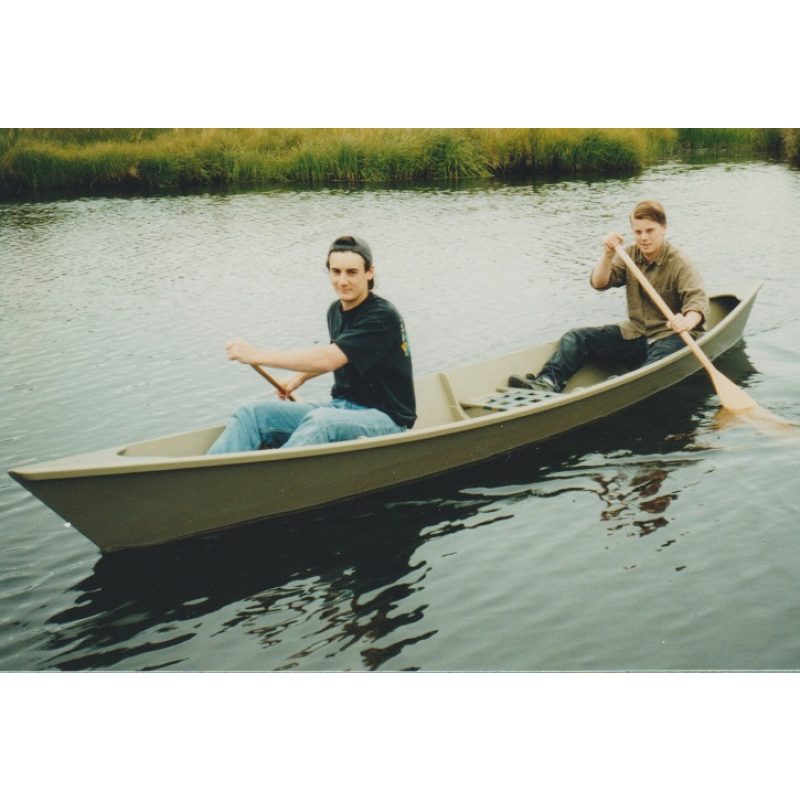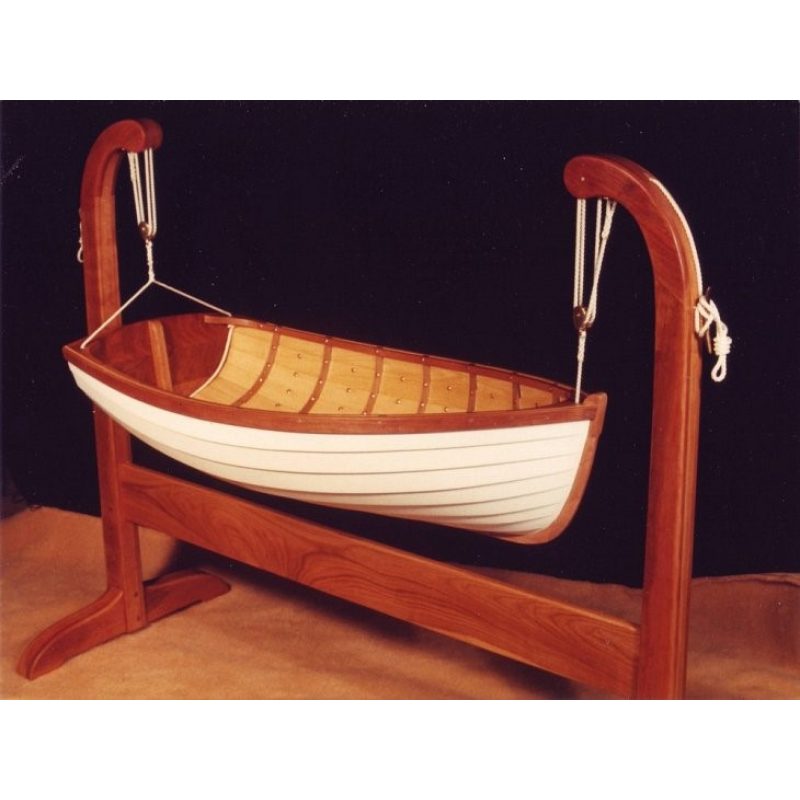Perhaps no other type of small craft exemplifies the uncomplicated, carefree boating experience better than the timeless flat-bottomed skiff. Flattie skiffs have been around for a very long time. They have been built in every possible size and configuration and have been used for every purpose imaginable, both for work and for pleasure. The reasons for this are simple: Flat-bottomed skiffs are easy and economical to build and they are able to do almost anything more complicated types can. They sail and row well and are able to do so in very shallow waters, And when water turns to beach there is no type better adapted to the transition. As a bonus, they can teach all of the basic skills of construction, maintenance and seamanship that form the nucleus around which you can build a lifetime of boating.
I designed Footloose to fill the broad requirements of boating on the saltwater estuaries of the west coast. I and many of the local characters like to sail, fish, crab, clam, camp on the beaches and explore the many backwaters and remote reaches of this area. There is only one boat type, in my estimation, that comes close to filling the bill for all these activities: The versatile flattie skiff.
In Footloose I combined the traditional lines and salty looks of the classic flattie skiff with the ease of building and seamless integrity of plywood construction. This resulted in a considerable savings in building time and a boat that takes well to the trailer. Generous side flare, freeboard and beam provide excellent stability, capacity and sail-carrying ability without detracting from her handsome appearance, while her rockered flat bottom and carefully designed hull lines combine to make a boat that is easily propelled by sail, oars or small outboard motor. A fine entry and raked bow minimize pounding in choppy waters and her centerboard and shallow draft make her an ideal beach cruiser.
Simple construction
Footloose is designed to be built on a solid, but simple and inexpensive ladder-frame jig. She is assembled with transverse frames and longitudinal structural members, a system that has proven over many years to result in boats of superior strength and durability. The five rigid frames are set up on the jig, and with the stem, transom, chines and keelson, provide the form to which the marine plywood is fastened. The frames remain an integral part of the boat, providing rigidity to the hull and attachment for the seat risers, inwales and gunwales. A centerboard trunk, thwarts and stern bench finish out the interior joinery. Plywood floorboards, fitted in removable sections between the frames, provide a dry walkway while protecting the bottom from wear.
The sailing rig I chose for Footloose is my favorite: the traditional loose-footed sprit. Besides looking right for this type of boat, it embodies the ultimate in simplicity, both in rigging and handling. Among its many virtues, it is inexpensive to fabricate and maintain, requiring no high-tech hardware or fittings. The spars can be easily fashioned by hand. It is extremely reliable and displays remarkably good overall performance, Another of its endearing features is that it spreads the largest area of sail on the shortest spars of any rig, It can be set up or struck in seconds and the whole rig can be rolled up and stowed inside the boat along one side, leaving plenty of room for the crew to row or motor. The 79 square-foot rig is boomless, in traditional fashion, making it very safe for children and those not used to “ducking the boom”. The sail plan also specifies a 30” deep reef, a reduction that should handle most conditions encountered.
A versatile craft
For knocking about in unfavorable conditions of wind or tide, Footloose responds handily to a small (5 HP or less) outboard motor, hung on a removable, adjustable bracket mounted to one side of the rudder. The rudder is of moderate draft. It incorporates a quick-release stop and a unique tiller that pivots to work with the skipper standing, for shoal-water navigation. For quick and compact stowing, the tiller can be rotated completely around to fold against the blade.
With her moderate spread of canvas, Footloose steps out nicely in light airs and will provide much enjoyable knocking about, particularly for those not so much interested in ultimate performance, but in the laid-back, salt-and-tar, nineteenth century style of boating. And that is what this kind of boat is all about.
The plans for Footloose include detailed large-scale construction drawings for all assemblies as well as diagrams for the simple ladder-frame jig that allows this transverse-framed 3/8” plywood hull to be precisely set up and assembled without fear of something going adrift, as is often the case with jigless construction. No lofting is required. Spar and sail plans detailing the rigging of this able craft are included, along with plans for traditional-style oars for auxiliary power. To clarify the building process, comprehensive construction notes describing all components are number-keyed to the corresponding assemblies in all the drawings.
Includes Footloose plans, patterns, instructions, and US shipping.
~Take advantage of our 20% off special on orders of $75 or more! Apply coupon code: Boatbuilder Special at checkout. [Valid for US orders only]
~Plans in PDF: Plans for Footloose can be ordered for email delivery in PDF format, at a discounted price.
~Consider including my book, Boatbuilding My Way, in your plans order. Available in Hardcopy or discounted PDF Format, it is the ideal companion to plans from Jordan Wood Boats.
Paying by Check
Our checkout system uses PayPal and Venmo. If you wish to pay by check, please fill your cart as you would normally, then print it out and mail it to us with your check, to the address shown in “Contact”.

